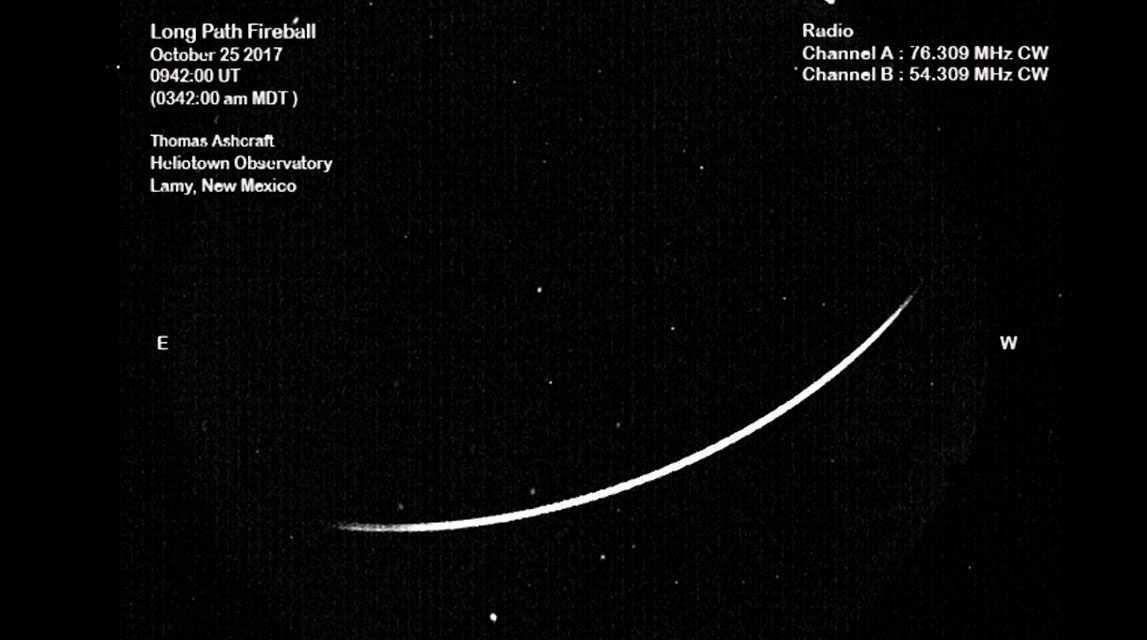
Ashcraft combines all-sky video camera observations with a forward-scatter radar array that is tuned to the plasma and ionization produced by meteors (Channel A 76.309 MHz CW - Channel B 54.309 MHz CW).
Whenever a meteor passes through the upper atmosphere it creates an elongated paraboloid of ionized air behind it. Occurring at an atmospheric height of about 85 to 105 km (50 to 65 miles), this ionized trail is capable of reflecting radio waves from transmitters below on the Earth's surface. This type of reflection behaves very similar to light reflecting from a mirrored surface, and is called a specular reflection. Meteor trail reflections are brief, however. As the trail rapidly diffuses into the surrounding air, it quickly loses its ability to reflect radio waves, causing most reflections to last less than 1 second. Occasionally, a large meteor may create a trail capable of reflecting radio waves for up to several minutes.
Although the AMS does not currently have an active network of radiometeor stations, the society continues to support amateur efforts in this fascinating aspect of meteor science. We encourage all enthusiastic amateurs to experiment with the establishment of forward scatter receiver systems.



Reader Comments
to our Newsletter